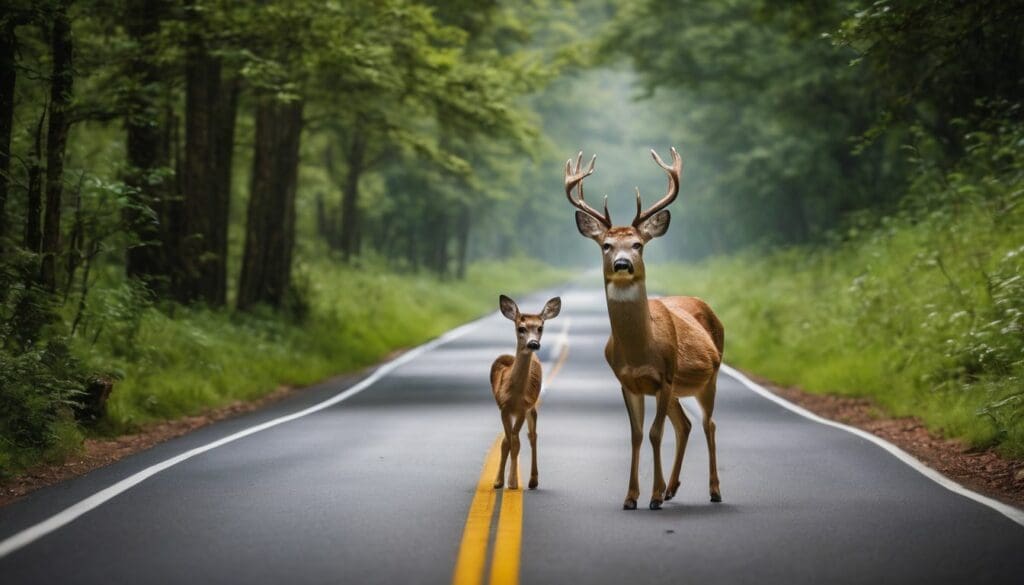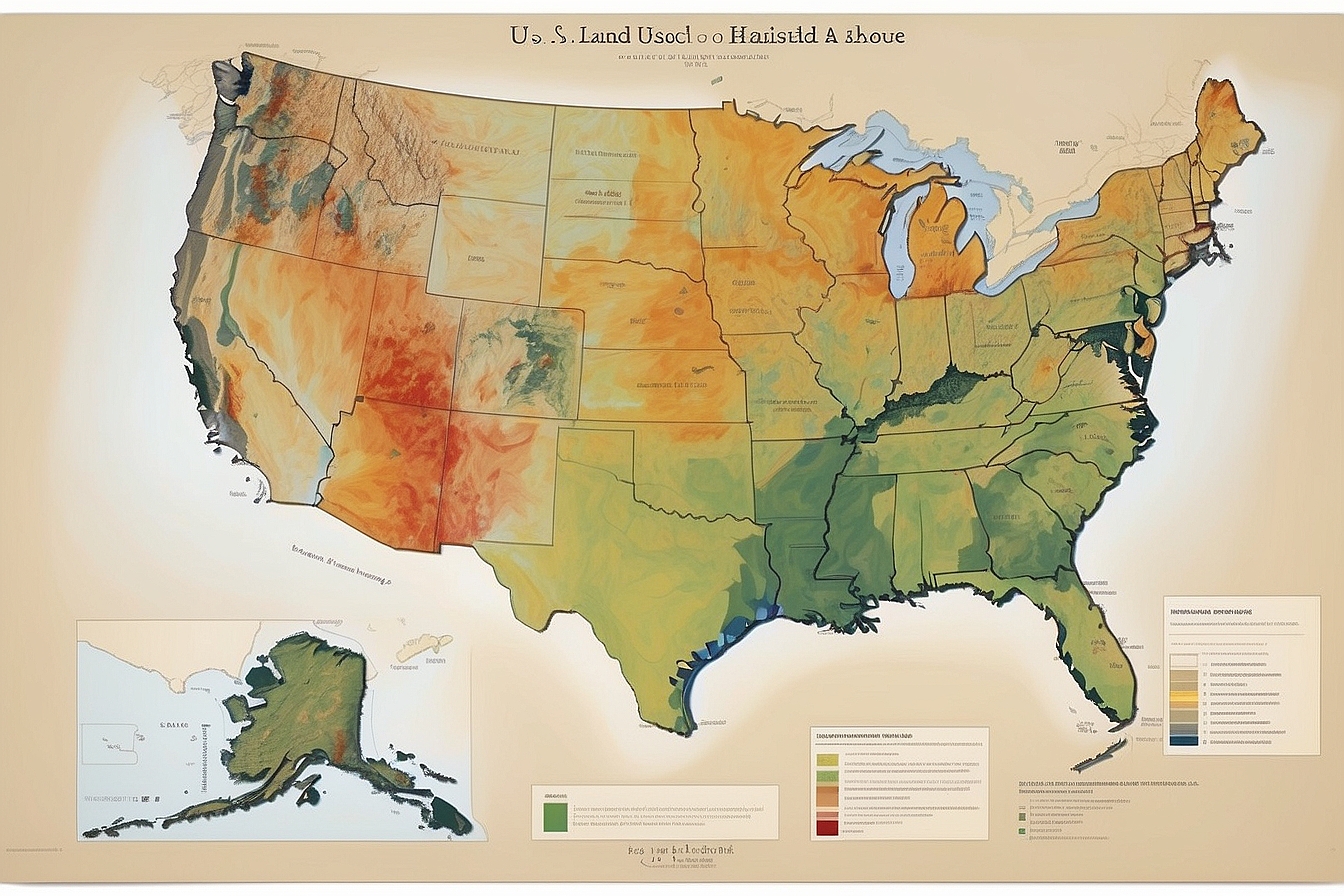As we wander through our local spots, it’s quite impossible not to notice the sweeping lattice of tarmac that intersects with natural landscapes. We’re acutely aware of your concerns regarding how these man-made structures interfere with wildlife; after all, studies have shown that even a solitary road can throw an entire ecosystem off-kilter.
In our upcoming insights, we plan to explore the deep-seated effects of roads on animal populations and bring to light some hands-on solutions that could help lessen their footprint.
Stay tuned as we seek out harmonious ways for nature and infrastructure to coexist.
Key Takeaways
- Roads can cause habitat loss and fragmentation, leading to a decline in biodiversity and creating isolated wildlife populations with reduced genetic diversity.
- Wildlife crossings, fencing, road closures, re-routing strategies, and speed limit reductions are key solutions for protecting animals from the negative effects of roads.
- Public education programmes raise awareness about the dangers roads pose to wildlife and encourage responsible behaviour that supports animal conservation.
Direct and Indirect Impacts of Roads on Wildlife
Roads have a direct and indirect impact on wildlife, leading to habitat loss and fragmentation, increased mortality rates due to collisions with vehicles, barrier effects that hinder movement and dispersal of species, and habituation effects that make animals more prone to human interference.
These impacts contribute to the decline in biodiversity and threaten the sustainability of wildlife populations.
Habitat loss and fragmentation
We see our landscapes changing as new roads cut through once-unbroken natural habitats. These critical areas are the lifelines for wildlife – offering food, shelter, and paths for migration.
But with each mile of asphalt laid down, we’re seeing a sharp decline in habitat availability and quality. This is not just about losing scenic views; it’s an urgent conservation issue that threatens biodiversity.
Our actions lead to fragmentation of these habitats, forming barriers that disrupt animal movement and gene flow. Imagine being an animal whose territory now has a highway running right through it – confusing isn’t it? Wildlife populations suffer as their once vast territories turn into isolated patches, unable to support genetic diversity or even sustain population numbers over time.
We must acknowledge this challenge if we aim to protect what remains of our world’s ecosystems.
Increase in mortality rates
Directly related to habitat loss and fragmentation, the increase in mortality rates among wildlife due to roads is a concerning issue. Species are vulnerable to vehicle collisions as they attempt to cross these roads or navigate through fragmented habitats.
This impact is particularly detrimental to threatened species and can lead to population decline and biodiversity loss within affected regions. Implementing effective mitigation strategies, such as wildlife crossings and speed limit reductions, can help reduce this negative impact on wildlife populations.
The increase in mortality rates has a significant impact on wildlife populations, contributing directly to biodiversity loss and threatening the survival of various species. It’s crucial that we take proactive measures to address this concerning trend by implementing effective mitigation strategies.
Barrier effect on movement and dispersal
Roads act as barriers, obstructing the movement and dispersal of wildlife. This can negatively impact their ability to find food, mates, or suitable habitats. Wildlife populations become isolated, reducing genetic diversity and increasing the risk of local extinctions.
Animals may also face increased mortality due to collisions with vehicles when attempting to cross roads.
The barrier effect on movement and dispersal highlights the urgent need for effective mitigation strategies that promote landscape permeability and allow for safe animal migration across road networks without endangerment or habitat fragmentation.
Habituation effect
Wildlife can become habituated to the presence of roads, leading them to lose their natural fear of vehicles and human activity. This can result in increased mortality rates as animals are more likely to be hit by cars when they do not flee at the sight or sound of approaching traffic.
In addition, habituation can also disrupt normal behaviors, such as foraging and mating activities. To mitigate this effect, wildlife education programs and reduced speed limits in areas with high wildlife activity are crucial.
As conservationists, understanding how road infrastructure impacts wildlife behaviour is paramount for implementing effective mitigation strategies. Next, let’s explore some ways we can work towards reducing the impact of roads on wildlife through roadside habitat management and design.
Mitigation Strategies for Reducing the Impact of Roads on Wildlife
Implementing measures such as roadside habitat management, wildlife crossings, and speed limit reduction can help reduce the impact of roads on wildlife. To learn more about these strategies and how they can make a difference for our wildlife and habitats, keep reading!
Roadside habitat management and design
Roadside habitat management and design play a crucial role in mitigating the impact of roads on wildlife. By implementing native vegetation and natural features along roadways, we can create habitats that support local wildlife populations.
Designing roadsides with consideration for the needs of different species, such as providing nesting sites and food sources, can help maintain ecological connectivity and reduce the barrier effect of roads on wildlife movement.
Additionally, incorporating green spaces alongside roads not only enhances the visual appeal but also contributes to biodiversity conservation. These roadside habitats act as vital corridors for wildlife migration, promoting gene flow between fragmented populations and supporting overall ecosystem health.
Wildlife crossings and fencing
When considering the impact of roads on wildlife and habitats, it’s essential to address measures that can mitigate this impact. Wildlife crossings and fencing play a crucial role in facilitating safe passage for animals, reducing roadkill incidents, and aiding their movement across fragmented habitats.
These structures provide vital connections between separated areas, allowing species to access food, water sources, breeding grounds, and shelter. By incorporating effective wildlife crossings and well-designed fencing along road networks, we can significantly contribute to maintaining ecological connectivity and sustaining healthy wildlife populations.
Moreover, the installation of wildlife crossings and fencing helps prevent human-wildlife conflicts by guiding animals away from hazardous roadways. This approach promotes coexistence between humans and wildlife while conserving natural habitats.
Road closures and re-routing
Road closures and re-routing play a crucial role in mitigating the impact of roads on wildlife. By strategically closing certain roads or re-routing traffic away from sensitive wildlife habitats, we can reduce habitat fragmentation and minimise direct wildlife mortality.
This also helps to promote the connectivity of natural landscapes and allows for the free movement of wildlife populations. Additionally, road closures and re-routing can contribute to enhancing public safety by minimising human-wildlife conflicts and reducing the risk of vehicle collisions with animals.
These proactive measures are essential for maintaining healthy ecosystems while ensuring safe coexistence between human infrastructure and wildlife.
Implementing road closures and re-routing is an effective way to prioritise conservation efforts while addressing urban development needs, fostering better ecological balance in areas affected by linear infrastructure.
Speed limit reduction and traffic calming measures
Reducing speed limits and implementing traffic calming measures significantly contribute to wildlife safety by lowering the risk of roadkill. Slower speeds give animals more time to react and cross roads safely, minimising potential collisions.
Additionally, reduced speed limits also decrease noise pollution associated with higher speeds, mitigating the habituation effect on wildlife populations near roads.
Implementing traffic calming measures such as speed bumps, chicanes, and roundabouts can effectively slow down vehicles in critical areas for wildlife movement. This not only protects wildlife from vehicular accidents but also enhances overall road safety for all users.
Encouraging drivers to reduce their speed through signage and public awareness campaigns is key in promoting a harmonious coexistence between human activity and wildlife habitats.
Public education and awareness programs
Public education and awareness programs play a crucial role in fostering understanding about the impact of roads on wildlife and habitats. These initiatives help to inform communities about the importance of preserving natural areas, promoting responsible behaviour around roadways, and advocating for conservation efforts.
By raising awareness about the potential impacts of roads on wildlife populations and their habitats, these programs empower individuals to become active participants in mitigating these effects.
Engaging with public education and awareness programs can lead to positive changes in behaviour concerning road use and development. Through increased knowledge, individuals are better equipped to support measures that lessen the impact of roads on local wildlife and their habitats, contributing to broader environmental conservation efforts.
Conclusion
In summary, roads have significant direct and indirect impacts on wildlife and their habitats. These impacts include habitat loss and fragmentation, increased mortality rates, barrier effects on movement and dispersal, as well as habituation effects.
It is crucial to implement effective mitigation strategies such as roadside habitat management, wildlife crossings and fencing, road closures and re-routing, speed limit reduction with traffic calming measures, along with public education programmes to address these challenges.
Taking proactive steps will help minimise the detrimental effects of roads on wildlife populations and their habitats for a more sustainable coexistence.
FAQs
1. What is road ecology and how does it relate to wildlife?
Road ecology studies the environmental impact of roads on wildlife populations and their habitats, showing how road construction can disrupt nature.
2. Can building roads really destroy animal homes?
Yes, indeed! Road construction often leads to habitat destruction, forcing animals from their natural homes and changing how they live.
3. How do roads affect the way animals behave?
The presence of roads can alter wildlife population dynamics, as animals try to avoid busy areas which sometimes leads to dangerous crossings that could harm them or people.
4. Is there a way to build roads without harming nature?
Conservation biology suggests ways we might lessen environmental impact by planning smarter road systems that help protect animal communities and their surroundings.





